Northgate
Dense mixed-use development is expected to be constructed adjacent to the future Northgate station on Link Light Rail, scheduled to open in 2021 as the terminus of the Northgate Link Extension.
About Northgate
Northgate is a neighborhood in north Seattle, Washington, named for and surrounding Northgate Mall, the first covered mall in the United States. Its east-west principal arterials are NE Northgate Way and 130th Street, and its north-south principal arterials are Roosevelt Way NE and Aurora Avenue N (SR 99). Minor arterials are College Way-Meridian Avenue N, 1st, 5th, and 15th avenues NE. Interstate 5 runs through the district. Besides the eponymous mall, the most characteristic distinctions of the area are North Seattle College (NSC), the south fork of the Thornton Creek watershed, and the Idriss Mosque.
The Northgate area has been subject to a large amount of residential and commercial development in the last few years, and many huge projects are underway. The height limits in the area have been increased to 85' to allow for further population growth.
In 2009 the Northgate Mall was remodeled and added dozens more retail shops. In 2006, a new park, library, and community center opened in the Northgate neighborhood across 5th Ave NE from Northgate Mall. These are part of the city's plan to accelerate development in Northgate.
Dense mixed-use development is expected to be constructed adjacent to the future Northgate station on Link Light Rail, scheduled to open in 2021 as the terminus of the Northgate Link Extension. Northgate will also be home to the headquarters and team practice facility of Seattle NHL team beginning in 2021.
*Source: Wikipedia.org
Read More ▾Avg Work Commute
0 minsMedian Age
0Median Area Income
$0Median Sale Price
$0The Commute
Travel Methods
To City CenterNorthgate Sales Data
Percentage change from latest quarter vs same time period previous year
Data compiled using 2nd quarter 2018 data vs. same period from 2017
Median Sales Price
MEDIAN SALES PRICE

Demographics
- Filter by:
- Population
- Income
- Education
- Market Rents
Population by Age Level. Median Age 37.61. Households: 17,356.
In Thousand of Dollars. (Median Income: $58,842)
Population by Education Level
Fair Market Rents
Northgate Schools & Education
Public & Private Institutions Of Learning
Education is provided by public, private and home schools. State governments set overall educational standards, often mandate standardized tests for K–12 public school systems and supervise, usually through a board of regents, state colleges, and universities. Funding comes from the state, local, and federal government. Private schools are generally free to determine their own curriculum and staffing policies, with voluntary accreditation available through independent regional accreditation authorities, although some state regulation can apply.
Avg School Rating
3.5/5Publically Funded
10Catholic / Religious
2Private / Charter
6Publically Funded
Northgate Elementary School
Elementary School
- Preschool - 5th Grade
- Student - Teacher Ratio: 14 : 1
-
Great School Rating:
- Website
Licton Springs K-8 School
Elementary School
- Preschool - 8th Grade
- Student - Teacher Ratio: 14 : 1
-
Great School Rating:
- Website
Cascadia Elementary School
Elementary School
- 1St Grade - 5th Grade
- Student - Teacher Ratio: 19 : 1
-
Great School Rating:
- Website
Home School Resource Center
Elementary School
- Kindergarten - 8th Grade
- Student - Teacher Ratio: 18 : 1
-
Great School Rating:
- Website
Sacajawea Elementary School
Elementary School
- Kindergarten - 5th Grade
- Student - Teacher Ratio: 16 : 1
-
Great School Rating:
- Website
Olympic View Elementary School
Elementary School
- Kindergarten - 5th Grade
- Student - Teacher Ratio: 19 : 1
-
Great School Rating:
- Website
Jane Addams Middle School
Elementary School
- Kindergarten - 8th Grade
- Student - Teacher Ratio: 16 : 1
-
Great School Rating:
- Website
Robert Eagle Staff Middle School
Middle School
- 6th Grade - 8th Grade
- Student - Teacher Ratio: Not Reported : 1
- Great School Rating: N/A
- Website
Ingraham High School
High School
- 9th Grade - 12th Grade
- Student - Teacher Ratio: 17 : 1
-
Great School Rating:
- Website
Middle College High School
High School
- 9th Grade - 12th Grade
- Student - Teacher Ratio: 20 : 1
-
Great School Rating:
- Website
Catholic / Religious
St Matthew Elementary School
Elementary School
- Preschool - 8th Grade
- Student - Teacher Ratio: 14 : 1
- Great School Rating: N/A
- Website
St Catherine School
Elementary School
- Preschool - 8th Grade
- Student - Teacher Ratio: 13 : 1
- Great School Rating: N/A
- Website
Private / Charter
Lakeside School
Middle School
- 5th Grade - 12th Grade
- Student - Teacher Ratio: 8 : 1
- Great School Rating: N/A
- Website
Perkins School
Elementary School
- Kindergarten - 5th Grade
- Student - Teacher Ratio: 10 : 1
- Great School Rating: N/A
- Website
Kindercare Learning Center
Elementary School
- Preschool - Kindergarten
- Student - Teacher Ratio: 10 : 1
- Great School Rating: N/A
Seattle Jewish Community School
Elementary School
- Kindergarten - 5th Grade
- Student - Teacher Ratio: 8 : 1
- Great School Rating: N/A
- Website
Dartmoor School
Elementary School
- 1St Grade - 12th Grade
- Student - Teacher Ratio: Not Reported : 1
- Great School Rating: N/A
- Website
Brightmont Academy
Middle School
- 7th Grade - 12th Grade
- Student - Teacher Ratio: Not Reported : 1
- Great School Rating: N/A
Where To Drink, Dine, Shop, Relax & Recline






























































































 By submitting information, I am providing my express written consent to be contacted by representatives of this website through a live agent, artificial or prerecorded voice, and automated SMS text at my residential or cellular number, dialed manually or by autodialer, by email, and mail.
By submitting information, I am providing my express written consent to be contacted by representatives of this website through a live agent, artificial or prerecorded voice, and automated SMS text at my residential or cellular number, dialed manually or by autodialer, by email, and mail.

